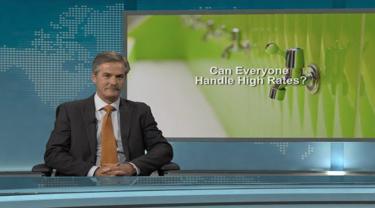Like it or not, interest rates are rising. And it seems no one will get a free pass; even in unlikely places (like Canada), the cost of borrowing is going up. All the talk is about the expected impact. Rates have been ultra-low for ultra-long, a fact that has doubtless conditioned planet-wide borrowing behavior. Those with a particular bent for borrowing could easily have binged over the past decade or so virtually unnoticed. Are they about to become front-page news, and if so, what is the likely outcome?
Sovereign states are the biggest borrowers on terra firma, bar none. Europe’s appetite for debt in the post-recession period was legendary, despite Germany’s remonstrations. Public debt also soared in the US, and is now a sore point with voters. Japan showed up at the party already pretty loaded, but has thought nothing of pressing the limits of debt ever further. Other OECD nations, including Canada, have also run up sizable debts in recent years. Let’s face it, we are all vulnerable to rising debt-servicing costs as the rate-tightening cycle sets in.
Emerging markets are far from exempt. Although ultra-loose monetary conditions enabled many to restructure their debts – reducing exposure to foreign borrowers and their currencies, lengthening amortization periods to shield the public purse from short term rate fluctuations, and so on – it has still been difficult to resist cheap debt. Why is that? Well for starters, lenders have for a long time had a hard time getting a decent yield on their holdings. Ample liquidity effectively bid down yields everywhere, prompting investors to scour the planet for higher returns. They found them in riskier places, one of which was emerging markets. It then became a race to lock in these returns, and in so doing, investors pushed down emerging market bond yields far lower than their risk profile would suggest. At one point, Zambia’s bond yields were lower than Spain’s!
All that is about to go into reverse – in fact, the unwind has already begun. Now, there is a lot of concern about what the end of cheap money means for emerging markets, and whether localized debt crises are inevitable. To gauge the potential impacts, EDC Economics has dusted off a tool we developed back in 2012 as the famed ‘taper tantrum’ was about to demonstrate what might happen to global debt markets. Our Country Vulnerability Index, upgraded since then, tracks seven key factors that measure exposure to the evolving situation.
For simplicity, our Index weights each of the seven factors equally, with the overall rankings being determined as the average of the ordinal ranking of the seven factors. In no particular order, the factors are: inflation-adjusted credit growth; portfolio investment inflows as a share of GDP; current account balance as a share of GDP; EDC’s commercial country ceiling rating; the number of months’ worth of import cover; the ratio of short-term external debt to international reserves; and gross external financing requirements as a share of GDP.
Due to data availability, we computed our rankings based on any six of the seven factors. For the most part, the standings are not surprising. Countries like Zimbabwe, Georgia, Nicaragua and Mongolia fare poorly owing largely to high external imbalances. Two in the top third of the table that bear watching are Venezuela (14) and Argentina (33), and a close follower is Turkey (37). All of the BRICS together with Mexico fare well in the rankings, generally being well into the lower half of the pack. Even the ‘next’ markets, for example Indonesia, fare well.
What we are about to witness is no less than a wholesale regime change for which there’s no complete playbook. That’s one of the key reasons that monetary regimes are taking a stepwise approach, testing the market with modest movements and lots of follow-up scrutiny. So far, capacity conditions have favoured a patient approach. The risk is that inflation forces central banks to tighten more aggressively, causing vulnerable debtors to feel the heat. It’s good to know in advance where the hotter spots are, and to ensure that any risks are covered as much as possible.
The bottom line?
Rising interest rates are perhaps the best signal that growth is normalizing at a stronger, sustainable pace. But it means a whole new approach to debt and currency management by sovereign governments, and as they adjust, it’s good to be as aware as possible of the stress points.





